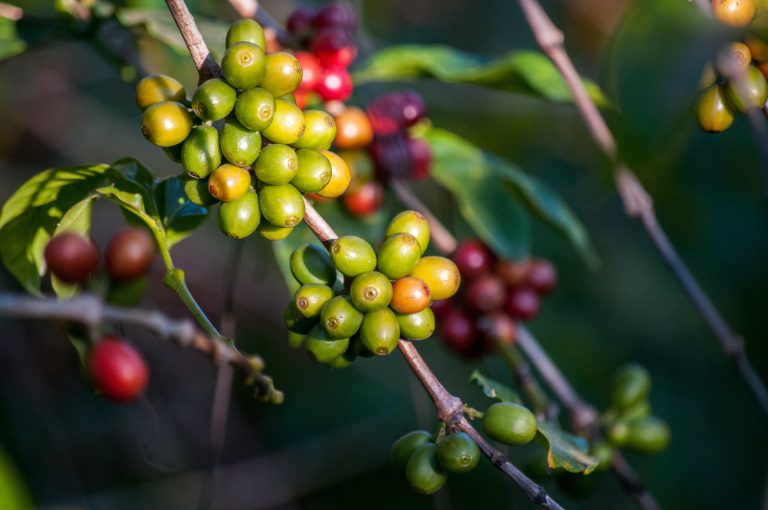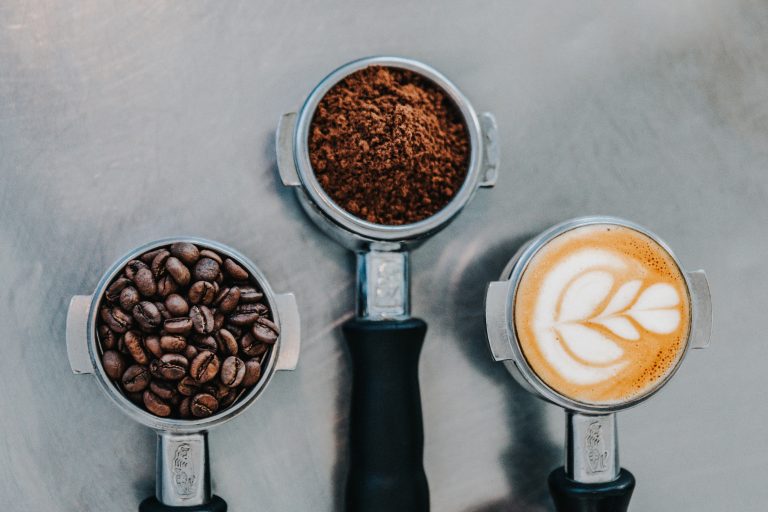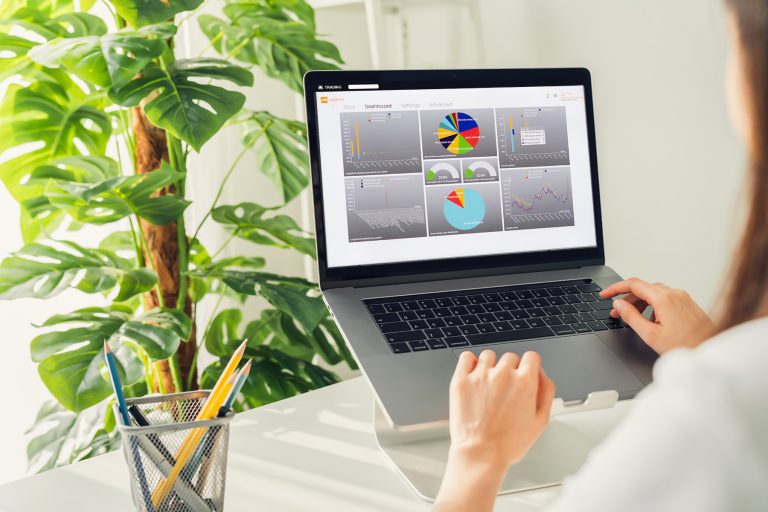Commodity trade and risk management (CTRM) solutions are by default complex and rich in functionalities to support all the flexibility that characterizes the industry. That’s why the full Agiblocks CTRM suite offers a wide variety of detailed features and functionalities. In many cases specialized for a certain commodity or commodity group. You can read all about it here.
The specialization of our software is what makes it the foremost CTRM solution for agricultural commodities in general, and for four of the biggest soft commodities specifically; Sugar, Coffee, Cocoa and Grains. That’s why we would like to address these commodities in depth, as well as explain to you how Agiblocks caters to them with unrivalled dedication. In this third episode of our series, we will be focusing on coffee.
In chapter 1, we will explain – as briefly as possibly – how and why coffee is such a complex commodity. In chapter 2, we’ll turn the spotlight on Agiblocks’ prowess to handle that complexity in ways that basically no other CTRM solution can.
1. The complexity of coffee: an introduction
Coffee is consumed in such great quantities, it is the world’s second largest traded commodity, surpassed only by crude oil. The market for our most beloved beverage after water and tea is worth well over 100 billion dollars worldwide, so you can imagine the trade is indeed a very lively one – it’s an economy in and of itself. Roasters, packers, growers and traders depend on the commodity, as does the coffee shop around the corner and the massive chains like Starbucks and Dunkin’ Donuts.
A coffee bean is the name of the seed of the coffee plant, or rather the pit inside the red or purple fruit often referred to as a cherry. ‘Coffee seed’ or ‘coffee pit’ doesn’t have quite the same ring to it though, so given the fact they sort of resemble beans, we have come to know them as coffee beans. As for the name Coffee, that is most likely derived from the kingdom of Kaffa in Ethiopia where the plant has its origins, and where the first coffee bearing trees date back to the ninth century. The first recordings of coffee as drink are dates much later on though, around the middle of the fifteenth century in Yemen.
Coffee quickly spread across the Arab world and was introduced in Europe about a century later when it first arrived in Italy. Production was still exclusively being controlled by the Arabs until the seventeenth century, but at the end of this century the Dutch managed to obtain coffee seeds and started their own production. After the success of the Dutch plantations in Batavia and Suriname, the British and the French also started to start up their own coffee plantations in their colonies in the Americas. After the introduction into the various colonies, coffee became one of the most profitable export products of the world.
1.1 Production and processing
The production of coffee is a time- and labor-intensive process. It can take up to four years before a newly planted coffee tree will began bearing fruits. The planting of new coffee trees takes place mainly during the wet season to enable the plants to grow strong roots and be ensured of enough water to grow sturdily.
There are two different methods of picking coffee beans: strip picking, in which all cherries are picked and gathered either manually or mechanically and sorted later on, and selective picking, done manually to select only cherries in the right state of ripening. The latter results in a much higher quality of coffee beans, but is also much more labor-intensive. The five biggest coffee producing countries are Brazil, Vietnam, Indonesia, Colombia and India.
Upon harvesting the coffee cherries, the next step is the processing. This must be done as quickly as possible after the harvest in order to prevent spoilage. There are two methods for the processing of the freshly picked cherries: the so-called dry and wet method. The dry method is the oldest method and is mostly used in locations where water is limited. During this process the picked cherries are spread out on a surface in order to dry in the sun. They are frequently raked over during the course of the day. Based on weather conditions this step may take several weeks, until they are ready to be stored. The wet method is basically a process of a number of steps. First the cherries are placed in a pulping machine in order to separate the cherries from other byproducts such as pulp and skin. The remaining beans are pushed through a water channel where the ripe, heavier beans will drop to the bottom.
Next, they are processed through rotating drums in order to separate them by size. Finally, they are placed in a water tank for one or two days, where the remaining layer of mucilage is removed from the bean. The beans are now ready for drying. the beans are dried in either large tumblers or by spreading and turning them like the original dry method.

1.2 Logistics and applications
The beans are sorted before they are stored, either by a machine or by hand. The beans are sorted by size and weight and any defected beans are removed from the batch. After the sorting, the beans are collected in sacks of 60 to 70 kilograms. These sacks control the moisture level of the beans and enable producers to store them up to one year.
Coffee beans are most commonly used to create the well-known beverage. Although the beans are a commodity, the roasting method of the beans however has created numerous types of coffee. Distinction between coffee beverages is made on roasting method and origin of the bean. These factors have a great impact on the eventual flavor of a cup of coffee. Other than that, the greatest influence on coffee are the additions, ranging from milk, cocoa, various liqueurs, cinnamon and different fruit juices. All these elements may be added to the original coffee to create the flavor experienced at home.
1.3 Types of coffee
There are dozens of varieties of coffee beans, but for the purposes of the applications in Agiblocks it suffices to focus on the two important ones: Arabica and Robusta. These are the two primary types of coffee cultivated for drinking.
Arabica coffee was originally cultivated on the Arabian Peninsula, hence the name. Robusta coffee is a more hardy plant but contains double the amount of caffeine. The two varieties differ in taste, growing conditions, and price. Arabica beans tend to have a sweeter, softer taste, with tones of sugar, fruit, and berries. It also the pricier one. Most supermarket coffee is exclusively Robusta, with a stronger, harsher taste.
2. Managing Coffee’s Complexity in a CTRM Solution
CTRM solutions for coffee need to handle the general complexities of any particular commodity, along with providing features such as usability, performance and integration. However, the coffee trade has a number of very specific aspects to it that not every CTRM solution will be able to handle with ease, or even at all. We will walk you through some of them, as Agiboo has made it its mission to handle all of them – with Agiblocks.
2.1 Trading and price factors
The New York Mercantile Exchange (NYMEX) is the most prominent exchange for trading coffee and its corresponding futures contracts. The prices of the coffee futures contracts on this exchange are a benchmark for other prices around the world.
In general, limited production countries influence the price of a commodity, and indeed the same applies to coffee, as the greatest part of global supply is offered by just a few countries. More specifically however, the correlation between the two types of coffee (see 1.3), Robusta and Arabica, is an important factor in pricings. When demand for one goes up, so does the price, while demand of the other declines (as does the price). Monitoring both can be a very useful indicator for future prices.

2.2 Logistics: various shapes and sizes and the need for hedge ratios
Specific functionality for specific commodities is what is often missing from more general legacy CTRMs – but not in Agiblocks.
Global production of coffee is generally measured in jute bags which hold up to 60 kg of coffee – although most exporters have shifted to one-ton polypropylene super-sacks instead of jute bags. However, there is no universally agreed upon size for the bags that make up a shipment. Ethiopia for instance ships mostly in those 60kg bags, whereas Guatemala goes for 30, 60 and 69 while Ecuador has 20, 50 and 70 – to name a few.
Agiblocks supports all sizes, so you can leave your pocket calculator out of the equation.
2.3 Logistics: franchise and tolerance
One very important aspect in the transportation and overall logistics of coffee is the changes in weight before and after transport; how do you load exactly 20 metric tons of coffee beans, for instance? Well, you don’t. Moreover, the weight tends to shift marginally due to changes in temperature and humidity. For this reason, there is the concept of tolerance and franchise. Check out our Agiboo Tutorial that covers this example in more detail:
Side note: invoicing in your Agiblocks software can also be adjusted to reflect real-world differences in weight bought and received, just as easily!
2.4 Logistics: sample-based
Transports of coffee are subject to rigorous quality controls. That is true of most commodities, indeed the agricultural ones, but here too several things are different for coffee. Most commodities have quality control upon delivery, but coffee is subjected to sample-based checks at various points along the logistics chain as well. These taste and quality measurements can even determine whether or not shipments can go ahead (or not).
That property of coffee comes with, among other things, pricing specifics such as SAS (Sale on Approved Sample or Subject to Approved Sample), where the contract is based on the buyer’s approval of the sample. Coffee samples or often randomly selected by blending contents of say 10 percent of the bags into one large quantity, send to the buyer to grade.
Additionally, there’s also the options of NANS or ‘no approval, no sale’, and Replace / No Replace, which specifies whether the buyer is agreeing to a new pre-shipment sample to be offered in place of the rejected sample.
2.5 Pricing of market differentials
The price specific to origin and quality of any product is not always the same; it may be higher or lower. For instance, there are country premiums on top of the commercial market price for any grade of arabica coffee. There are premiums for countries and regions, but for specialty coffees too. The premium (or discount) of the physical product, the differential, represents the value the market attaches to the product, plus or minus, depending on price/quality. Now that’s a given for several commodities, including coffee.
There is a difference when we’re talking about the pricing of these premiums though: when calculating premiums for sugar and cocoa, you use dollars per ton. When calculating premiums for coffee, you use cents per pound. That minor yet important difference is accounted for in Agiblocks.
2.6 Certification
In the coffee chain, increasing attention is being paid to sustainability. This is reflected, among other things, in the sustainability of the production conditions of the coffee armers themselves. UTZ is a certification program for sustainable production of, among other commodities, coffee, tea and cocoa.
UTZ certification shows consumers that products have been sourced, from farm to shop shelf, in a sustainable manner. To become certified, all UTZ suppliers have to follow our Code of Conduct, which offers expert guidance on better farming methods, working conditions and care for nature. This in turn leads to better production, a better environment and a better life for everyone.
Now, say you are in the business of selling coffee to local vendors, and you have just sold a shipment of UTZ certified beans. Your buyer wishes to receive that shipment as soon as possible, but transport from Colombia is still several weeks out. Meanwhile, your storage facility has the right volume in stock, but that particular batch comes from elsewhere and has no UTZ certification. The system allows you to exchange certification within your own product balance, provided you don’t sell more uncertified stock than you buy. Agiblocks has the tools to set up that exchange in your CTRM software.
Mind you, these are just a few of the specific issues around coffee trading that are often either not supported in a generic CTRM solution, or may require some form of work-around to handle. And those work-arounds don’t come easily. Because some of these aforementioned factors may seem like small areas of functionality, to add them to an existing CTRM is a major undertaking as that the functionality needs to work across the system. For example, in position management reporting, for hedging purposes where traders need to hedge small quantities of commodities individually; both currencies and terminal markets, where it impacts pricing, price formulae and so on.
Adding a small area of specificity for a commodity has huge ripple effects across the entire solution that also need to be considered. As a result, anyone looking to procure a CTRM solution for coffee trading should ensure that the short-listed CTRM solutions are able to handle such specifics along with all of the other expected functions and features of a good and usable solution. This actually narrows the field of potential solutions quite considerably.

3. Agiblocks: a true Coffee solution
Agiblocks is a multi-commodity capable system out of the box. Built on modern technology, it provides functionality for trading physical commodities and their terminal market instruments. It supports contract management, logistics fulfillment, forex and hedging, and it has tools for real-time risk analysis and risk management. It supports both trading management and financial management from the same source of data and within the same application. Its modular structure allows users to implement an end–to-end solution or to select individual functions to implement only the functions that are needed.
While Agiblocks is a strong contender across many commodities, it is extremely strong in terms of meeting the specific requirements of the coffee markets with a number of customers implemented and using the software to support their coffee trading businesses. Agiblocks provides all of the functionalities discussed above that are specific to coffee.
Experience Agiblocks and judge for yourself
Experience our CTRM software solution for free and get a front-row seat to all the benefits Agiblocks has to offer with our free demo. The full range of Agiblocks functionality is available within the demo environment for your browsing leisure. Familiarize yourself with the tools and features of our powerful and agile software solution and find out how you can make the daily practices of commodity trade and risk management more efficient. Fill out the form on agiboo.com/demo and we will get back to you.
